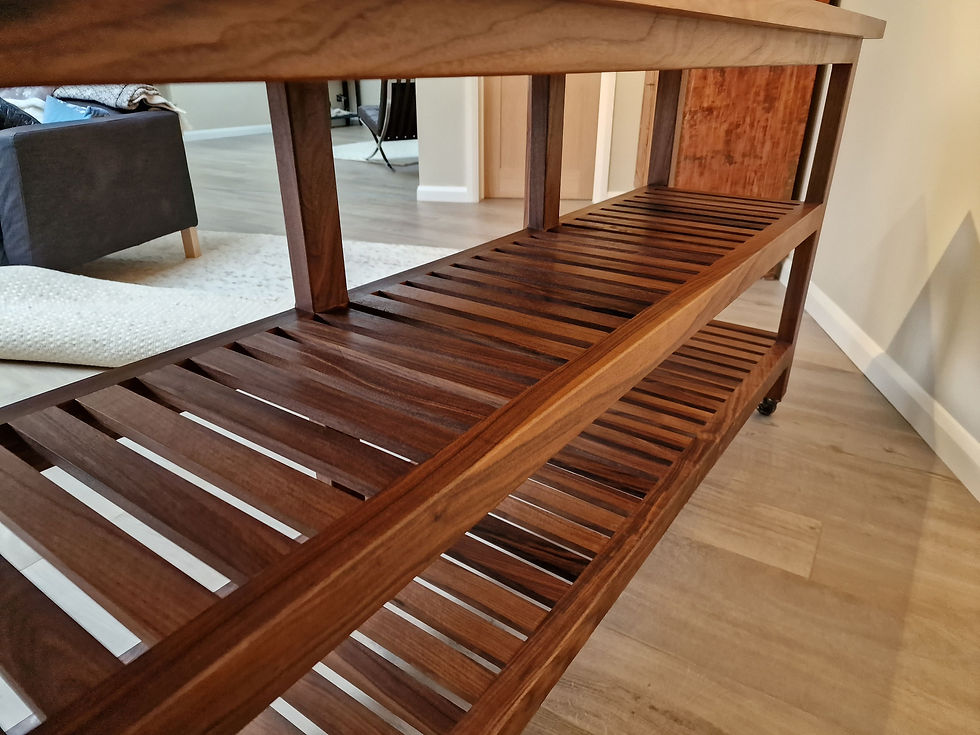What UK Timber Is Really Sustainable? Eco-Friendly Choices in Fine Furniture Design
- Rich Moss

- Dec 8, 2023
- 3 min read
Updated: Jan 10, 2024
A World of Sustainable Timber?
In the ever-evolving landscape of fine furniture design, the choice of materials plays a crucial role in shaping not just the aesthetics but also the environmental impact of the pieces we create. As a passionate furniture designer and maker, I try and blend creativity and responsibility, seeking ways to produce exquisite pieces while minimising the ecological footprint. In this blog, I will talk through the various options available for sustainable timber and shed a bit of light on some eco-friendly practices.

The Importance of Sustainable Timber in Fine Furniture Design
Before delving into the specifics, let's understand why sustainable timber is becoming so important in fine furniture design. Consumers are increasingly conscious of their environmental impact in every aspect of their lives, leading to a growing demand for ethically sourced materials. Sustainable timber not only preserves forests and biodiversity but also supports local economies.
The Oak Dilemma: Balancing Tradition and Sustainability
Traditional Charm vs. Environmental Impact: Oak has long been revered in the world of fine furniture for its durability, strength, and beauty. However, the popularity of oak raises questions about its sustainability. While it is native to the UK and has been a staple in furniture making for many centuries, its widespread use has led to concerns about overharvesting and deforestation. It is therefore important to source oak from responsibly managed forests. Look for certifications such as FSC (Forest Stewardship Council) or PEFC (Programme for the Endorsement of Forest Certification) when considering oak, these certifications ensure that the wood comes from sustainably managed forests that promote responsible forestry practices.
The excitement of lesser-known gems: Sycamore, Elm and Beyond
The Versatility of Sycamore: Sycamore, often overshadowed by more popular species, is a versatile and sustainable choice for fine furniture. With a light colour and fine grain, sycamore offers a contemporary aesthetic. It's readily available in the UK, reducing transportation emissions, and its fast growth makes it an easily renewable resource.
Embracing Elm for Character and Sustainability
Elm, with its distinctive grain patterns and rich hues, is another underappreciated gem in the world of fine furniture. Elm trees that succumb to Dutch elm disease are often salvaged for their timber, making it an eco-friendly choice that repurposes wood that would otherwise go to waste.
Local Heroes: Timber from Managed Woodlands - The Beauty of Local Woodlands
One of the most sustainable choices is timber sourced from well-managed local woodlands. This not only reduces the carbon footprint associated with transportation but also supports the preservation of regional ecosystems. By collaborating with local foresters and woodland owners, you can ensure that timber is harvested in a way that promotes biodiversity and long-term forest health.
Beyond Timber: Exploring Sustainable Finishes and Joinery - Eco-Friendly Finishes
The sustainability journey doesn't end with timber selection. The finishes applied to fine furniture can significantly impact its environmental footprint. Opting for water-based, low-VOC (volatile organic compound) finishes is a conscious choice that minimises the release of harmful chemicals into the environment. These finishes not only contribute to a healthier indoor environment but also align with the ethos of sustainable craftsmanship.
Time-Honoured Joinery Techniques
Joinery is the art of connecting wood pieces in a way that ensures longevity and structural integrity. Embracing traditional joinery techniques not only enhances the craftsmanship of a piece but also contributes to its sustainability. Dovetail joints, mortise and tenon and finger joints are examples of time-tested methods that reduce the need for adhesives and ensure the longevity of a piece.
Conclusion: Crafting a Sustainable Future for Fine Furniture Design
In the world of fine furniture design, the choices we make today have a lasting impact on the environment and the legacy of the craft. By selecting sustainable timber, embracing lesser-known but equally beautiful wood varieties, and incorporating eco-friendly finishes and joinery techniques, we can create bespoke pieces that not only tell a great story but also contribute to a more sustainable future.
If you would like to discuss a potential project contact me at info@richmossfurniture.co.uk



